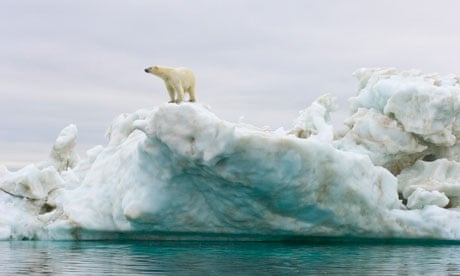See
what the story the media was telling back in 2007, even in late-2011
Now
that methane emissions are going exponential the media has gone
silent on the matter, and denial and avoidance are the order of the
day while the US goes full tilt with plans to extract oil in the
Arctic.
When was the last time Igor Semiletov or Natalia Shakhova were quoted in MSM (especially the Guardian)

Welcome
to the world of suicidal ecocide
"Countdown
to Doomsday" Methane Release MSNBC
Vast
methane 'plumes' seen in Arctic ocean as sea ice retreats
13
December, 2011
Dramatic
and unprecedented plumes of methane - a greenhouse gas 20 times more
potent than carbon dioxide - have been seen bubbling to the surface
of the Arctic Ocean by scientists undertaking an extensive survey of
the region.
The
scale and volume of the methane release has astonished the head of
the Russian research team who has been surveying the seabed of the
East Siberian Arctic Shelf off northern Russia for nearly 20 years.
In
an exclusive interview with The Independent, Igor Semiletov of the
International Arctic Research Centre at the University of Alaska
Fairbanks, who led the 8th joint US-Russia cruise of the East
Siberian Arctic seas, said that he has never before witnessed the
scale and force of the methane being released from beneath the Arctic
seabed.
"Earlier
we found torch-like structures like this but they were only tens of
metres in diameter. This is the first time that we've found
continuous, powerful and impressive seeping structures more than
1,000 metres in diameter. It's amazing," Dr Semiletov said.
"I
was most impressed by the sheer scale and the high density of the
plumes. Over a relatively small area we found more than 100, but
over a wider area there should be thousands of them," he said.
Scientists
estimate that there are hundreds of millions of tons of methane gas
locked away beneath the Arctic permafrost, which extends from the
mainland into the seabed of the relatively shallow sea of the East
Siberian Arctic Shelf.
One
of the greatest fears is that with the disappearance of the Arctic
sea ice in summer, and rapidly rising temperatures across the entire
Arctic region, which are already melting the Siberian permafrost, the
trapped methane could be suddenly released into the atmosphere
leading to rapid and severe climate change.
Dr
Semiletov's team published a study in 2010 estimating that the
methane emissions from this region were in the region of 8 million
tons a year but the latest expedition suggests this is a significant
underestimate of the true scale of the phenomenon.
In
late summer, the Russian research vessel Academician Lavrentiev
conducted an extensive survey of about 10,000 square miles of sea off
the East Siberian coast, in cooperating with the University of
Georgia Athens. Scientists deployed four highly sensitive
instruments, both seismic and acoustic, to monitor the "fountains"
or plumes of methane bubbles rising to the sea surface from beneath
the seabed.
"In
a very small area, less than 10,000 square miles, we have counted
more than 100 fountains, or torch-like structures, bubbling through
the water column and injected directly into the atmosphere from the
seabed," Dr Semiletov said.
"We
carried out checks at about 115 stationary points and discovered
methane fields of a fantastic scale - I think on a scale not seen
before. Some of the plumes were a kilometre or more wide and the
emissions went directly into the atmosphere - the concentration was a
hundred times higher than normal," he said.
Dr
Semiletov released his findings for the first time last week at the
American Geophysical Union meeting in San Francisco. He is now
preparing the study for publication in a scientific journal.
The
total amount of methane stored beneath the Arctic is calculated to be
greater than the overall quantity of carbon locked up in global coal
reserves so there is intense interest in the stability of these
deposits as the polar region warms at a faster rate than other places
on earth.
Natalia
Shakhova, a colleague at the International Arctic Research Centre at
the University of Alaska Fairbanks, said that the Arctic is becoming
a major source of atmospheric methane and the concentrations of the
powerful greenhouse gas have risen dramatically since pre-industrial
times, largely due to agriculture.
However,
with the melting of Arctic sea ice and permafrost, the huge stores of
methane that have been locked away underground for many thousands of
years might be released over a relatively short period of time, Dr
Shakhova said.
"I
am concerned about this process, I am really concerned. But no-one
can tell the timescale of catastrophic releases. There is a
probability of future massive releases might occur within the decadal
scale, but to be more accurate about how high that probability is, we
just don't know," Dr Shakova said.
"Methane
released from the Arctic shelf deposits contributes to global
increase and the best evidence for that is the higher concentration
of atmospheric methane above the Arctic Ocean," she said.
"The
concentration of atmospheric methane increased unto three times in
the past two centuries from 0.7 parts per million to 1.7ppm, and in
the Arctic to 1.9ppm. That's a huge increase, between two and three
times, and this has never happened in the history of the planet,"
she added.
Each
methane molecule is about 70 times more potent in terms of trapping
heat than a molecule of carbon dioxide. However, because methane it
broken down more rapidly in the atmosphere than carbon dioxide,
scientist calculate that methane is about 20 times more potent than
carbon dioxide over a hundred-year cycle



CH4 could be 300 - 1000 times worse than CO2, depending on concentrations.
ReplyDeleteThe IPCC have got it 100% wrong on their calculations, they say CH4 has a life span of only 12 years, and gets weaker as it ages, but as the amount is constantly increasing, and replacing the 'old stuff' CH4 is as good as immortal at the moment.